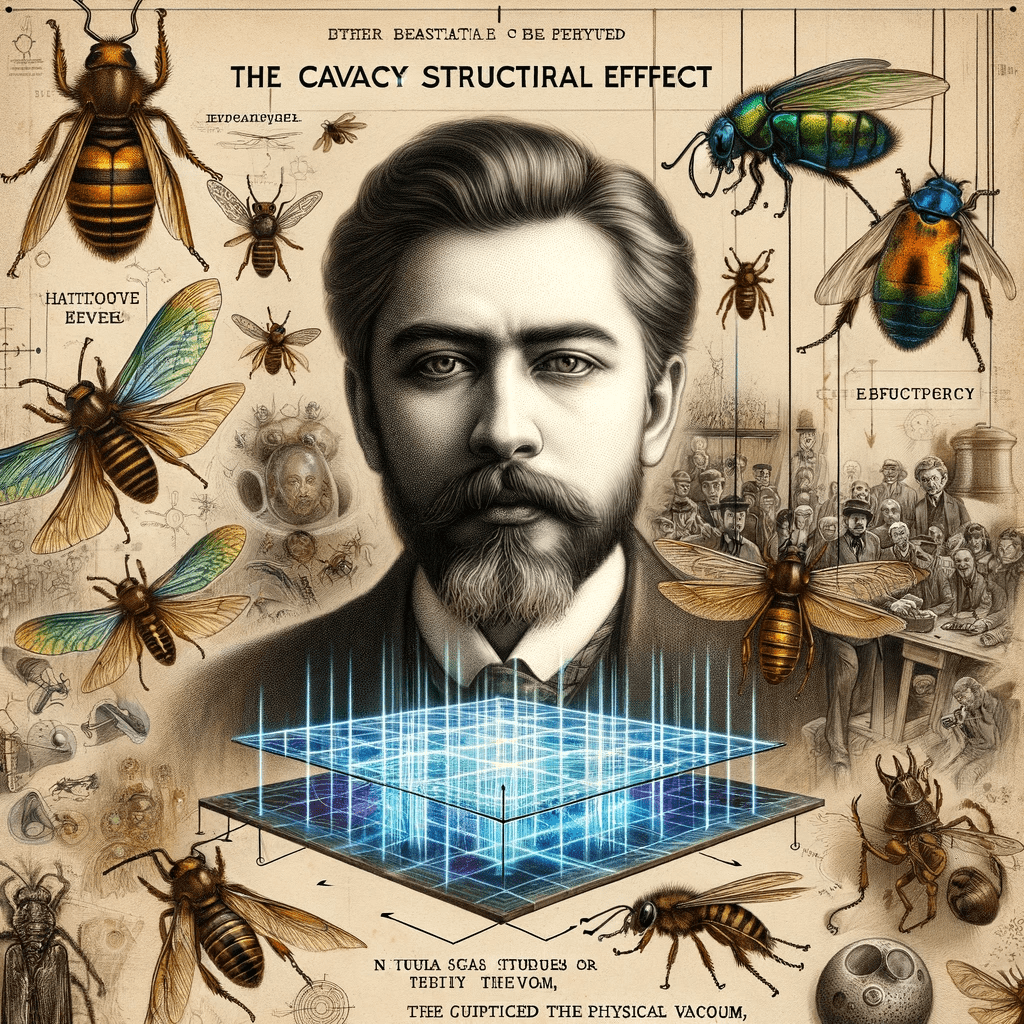Viktor Grebennikov

Viktor Stepanovich Grebennikov was an unconventional figure in the scientific community, born in 1927 in Simferopol, Crimea, and passing away in 2001. His life and work have stirred a significant amount of intrigue and controversy over the years, primarily due to his unconventional theories on natural phenomena and his bold claims about inventing a levitation platform.
Grebennikov’s educational background was firmly rooted in the natural sciences. He graduated from the Faculty of Natural Sciences of the Pedagogical Institute in Irkutsk, Russia, where he developed a keen interest in the study of insects, leading him to become an entomologist. His fascination with insects, their behavior, and their unique biological structures, notably their wings and exoskeletons, deeply influenced his later work and theories.
Throughout his professional career, Grebennikov held several positions, including the head of the public health department in the Russian city of Kamyshlov. However, it was in his role as an entomologist that he gained notoriety. He was the editor of the Russian-language journal “Science and Life” and wrote several books on entomology, including “In the World of Insects” and “My World.”
In relation to Unidentified Aerial Phenomena (UAP) and Unidentified Flying Objects (UFO), Grebennikov claimed that his aforementioned levitation platform could explain some of these phenomena. He posited that the same natural principles he believed to have harnessed for levitation might also be at play in the mysterious movements of UAPs and UFOs.
Grebennikov’s most well-known claim revolves around what he termed the “Cavity Structural Effect” (CSE). He believed that the unique, microscopic structures found in the chitinous shells of certain insects could create a disturbance in what he called “the physical vacuum,” resulting in levitation. Grebennikov claimed to have built a platform utilizing these structures, which he asserted allowed him to fly at high speeds and altitudes.
The Cavity Structural Effect (CSE) is a phenomenon that Viktor Grebennikov claimed to have discovered. According to Grebennikov, this effect arises from certain geometrical shapes or arrangements, particularly from natural structures like the chitinous shells of insects, which he believed could interact with the physical vacuum or the quantum field.
In his writings, Grebennikov suggested that these specific structures, when organized in a particular way, create a type of interference with what he described as the “physical vacuum” or “zero-point field,” a concept from quantum field theory that refers to the lowest possible energy state, where even at absolute zero, there still exists fluctuating energies due to quantum effects.
Grebennikov asserted that the interaction between these structures and the vacuum could yield extraordinary phenomena, including anti-gravitational or levitational effects. He claimed that the microstructures found on the wing cases of certain beetles were a prime example of this phenomenon, and he attempted to harness this effect in his alleged levitation platform.
- He was a prolific naturalist and entomologist. According to the “Encyclopedia of Russian Stage” (Russian: “Энциклопедия русской духовной культуры”), he discovered over a hundred new species of insects during his career.
- He was a gifted artist, painting detailed pictures of insects and nature. This can be confirmed by his work that is on display at the Grebennikov Museum in Novosibirsk, Russia.
- His book “My World” presents a detailed account of his claimed discoveries and theories, including the CSE and his purported levitation platform. The book “My World” is one of Grebennikov’s most comprehensive and personal works, providing readers with insights into his life, his fascination with the natural world, and his unconventional ideas. It serves as a primary source for those interested in understanding his perspective on the Cavity Structural Effect and the levitation platform.
The book “My World” is one of Grebennikov’s most comprehensive and personal works, providing readers with insights into his life, his fascination with the natural world, and his unconventional ideas. It serves as a primary source for those interested in understanding his perspective on the Cavity Structural Effect and the levitation platform.
Experts have varying opinions about Grebennikov and his work. Some are intrigued by his ideas and the potential implications of his discoveries, while others dismiss his claims as pseudoscience. For example, Dr. Anatoly Akimov, a Russian physicist and director of the International Institute of Theoretical and Applied Physics, has expressed interest in Grebennikov’s work, specifically the Cavity Structural Effect. He is quoted in the Russian newspaper “Komsomolskaya Pravda” as stating that the phenomenon could have significant applications in various fields.
Grebennikov’s work has also garnered attention from newspapers and other media outlets. For instance, “Komsomolskaya Pravda” published an article in 1991 titled “The Flight of Viktor Grebennikov,” which recounted the story of Grebennikov’s supposed levitation platform and detailed some of his claims.
Viktor Stepanovich Grebennikov was a Russian entomologist, naturalist, and author who gained notoriety for his unconventional claims about levitation and the Cavity Structural Effect.

